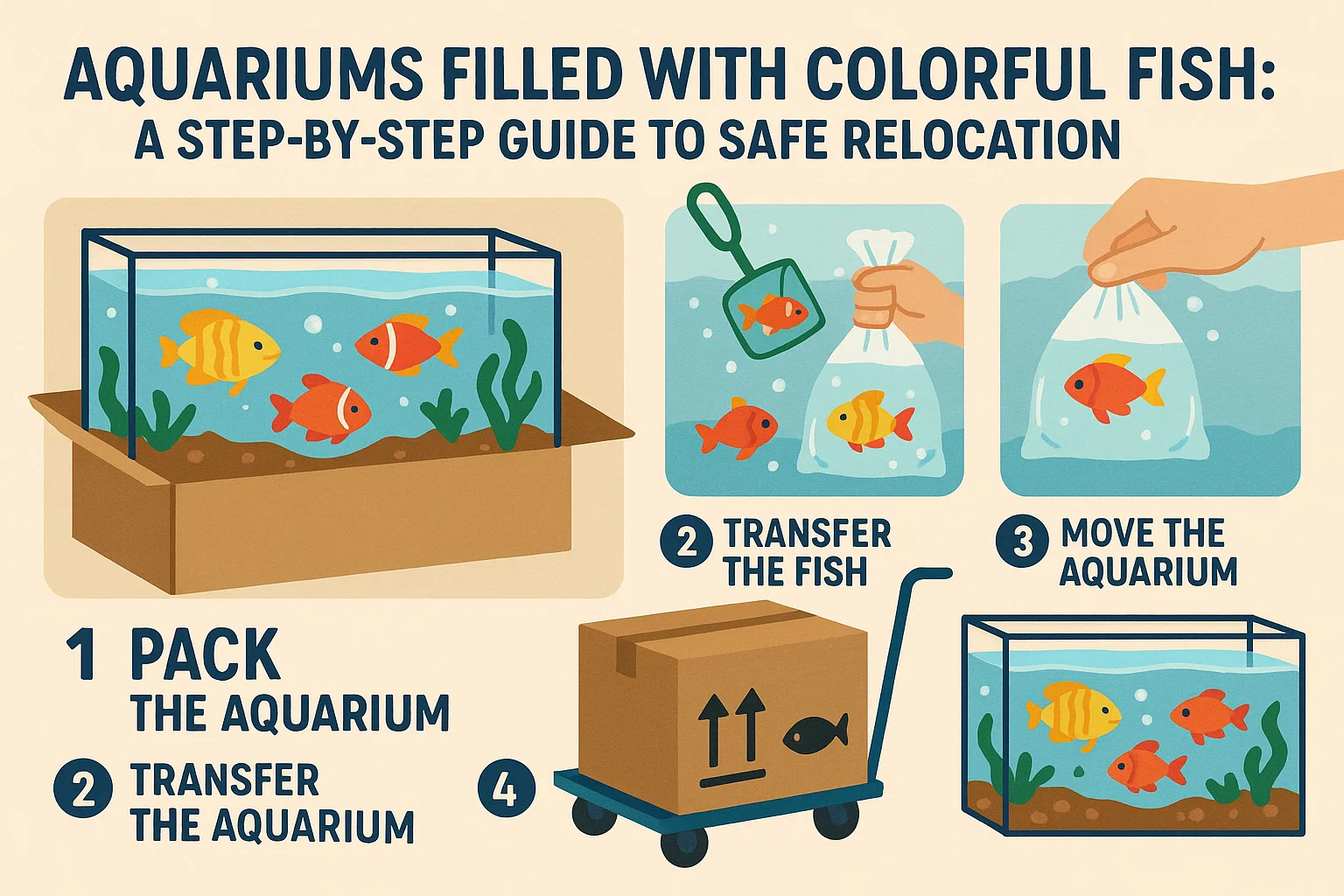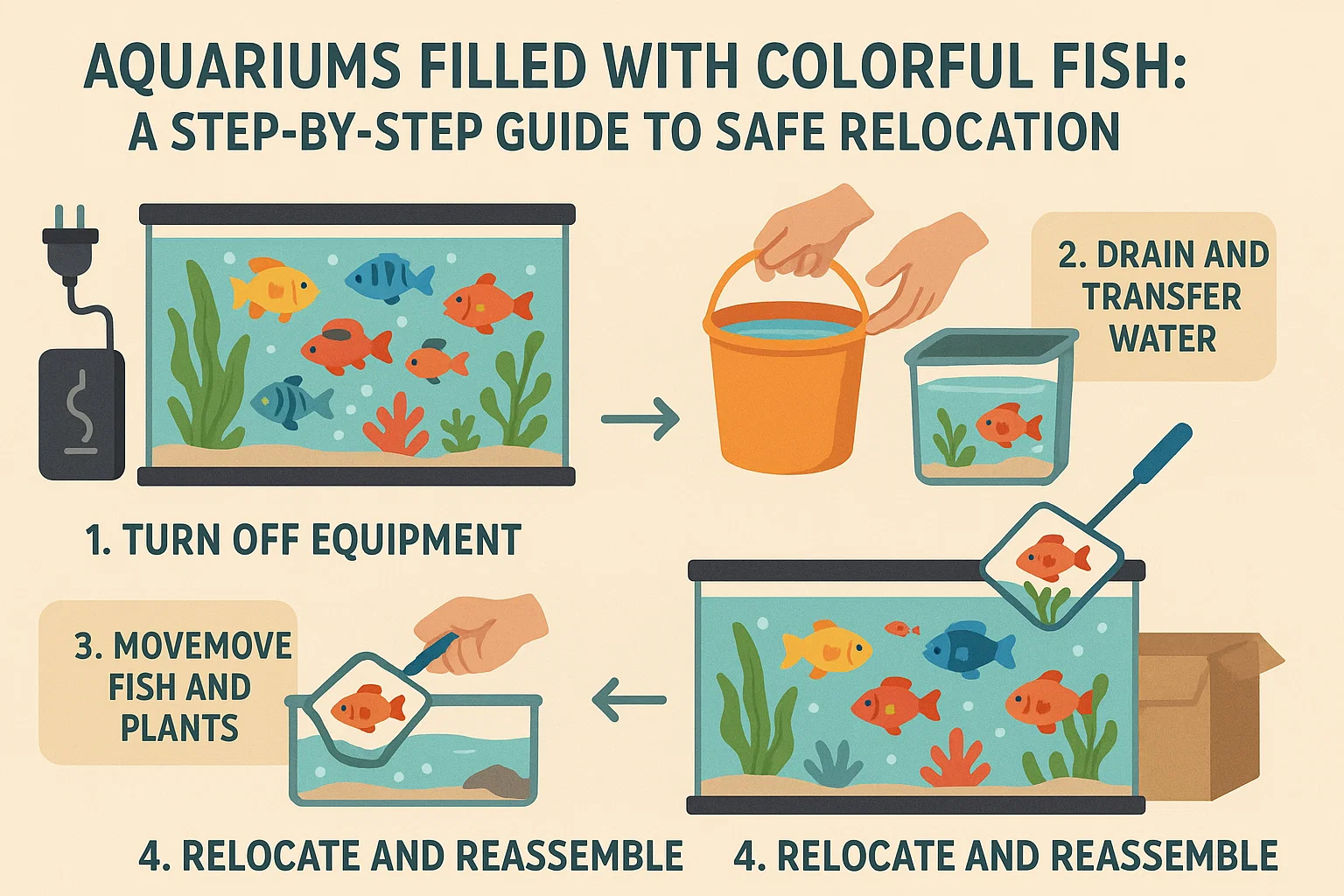Aquariums Filled with Colorful Fish: A Step-by-Step Guide to Safe Relocation

Aquariums Filled with Colorful Fish: A Step-by-Step Guide to Safe Relocation
Aquariums filled with colorful fish of all sizes, shapes, and colors are often calming for the soul. Underwater plant life conjures a soothing feeling of relaxation as the brilliant tiny ecosystem sways delicately throughout the day and night. Traveling with these delicate creatures, however, requires careful planning to maintain their fragile ecosystem. Below is a detailed guide to ensure your aquatic pets thrive during and after a move.
What You’ll Need
- Fishnet for safely transferring fish to travel containers.
- Travel containers such as five-gallon buckets, plastic bags, or totes (size depends on fish size and trip duration).
- Tall cups/mugs for vertical-swimming species like seahorses.
- Buckets for aquatic plants and substrate.
- Packing tape to secure lids.
- Oxygen for long-distance moves in sealed bags.
- Siphon hose to drain tank water.
- Durable gloves for handling coral and live rocks.
- Cooler to regulate transport temperature.
- Towels/packing supplies for spills and equipment protection.
Preparation Prior to Moving Day
30 Days Prior
Add sponge filters to your tank’s sump or hidden areas. These will cultivate beneficial bacteria to kickstart filtration in the new location. On moving day, pack them in sealed bags inside a cooler.
Five Days Prior
Replace 20% of the tank water to ensure clean transport water while allowing nitrogen levels to stabilize.
24–48 Hours Prior
Stop feeding fish to reduce waste and toxins during transit. Fish can safely go without food for up to a week.
Transport by Air
For air travel, check TSA guidelines for live fish in carry-ons. Containers must meet size, weight, and safety requirements.
The Moving Process
Last Out, First In
Pack the aquarium last to minimize stress on livestock. Set it up first at your destination to reduce time without filtration.
Packing Fish
Use plastic bags filled ⅓ with tank water, double-bagged and secured with rubber bands. For trips over an hour, add oxygen. Place bags in a cooler for temperature stability.
Packing Coral and Plants
- Soft corals: Use partially filled bags with air space, stored in a cooler.
- Stony corals: Secure in sturdy containers or buckets.
- Aquatic plants: Transport submerged in buckets or sealed bags.
Packing Snails
Place snails in bags with a small amount of water and java moss. Ensure air access and store in a cooler.
Packing Live Rocks
Keep live rocks (covered in beneficial bacteria) submerged in water or wrap in damp aquarium-soaked towels. Store in a cooler to prevent drying.
Substrate and Water Preservation
Substrate: Scoop sand/gravel into water-filled buckets, though expect some settling. Water: Preserve as much original tank water as possible using clean buckets. Avoid tap water to maintain bacterial balance.
Reassembly Tips
- Set up the tank in its new location first.
- Reintroduce saved water, substrate, and live rocks.
- Gradually acclimate fish to the restored environment over several hours.
With careful preparation and attention to detail, your aquatic ecosystem can thrive in its new home, bringing peace and beauty to your space once again.




